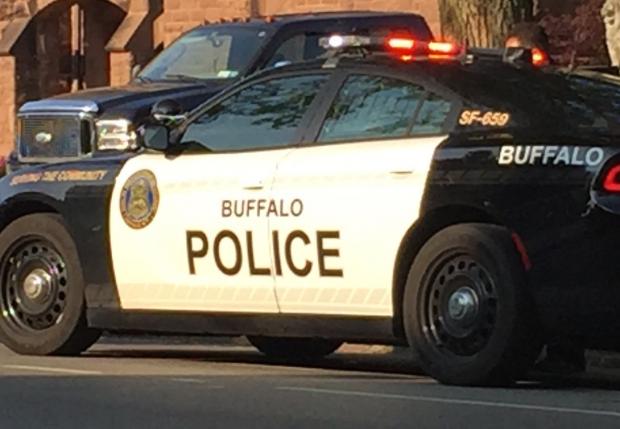Public Record: Police in Wonderland
Last weekend, perhaps the two most veteran reporters in Buffalo collaborated on a long piece about policing in Buffalo that largely followed in the footsteps of an even longer piece that ran on CNN.com in early August. The basic premise of both: Officers of the Buffalo Police Department, and its Strike Force unit in particular, should be applauded for not having killed anyone between 2013 and 2016, which, the reporters say, defies the odds from a data perspective.
Both stories trace similar if not identical scenarios and tense events in the lives of cops charged with getting guns off the street and dismantling organized crime. The CNN piece unironically quotes Anthony Fanara saying he regretted not shooting a suspect when he believed he had the justification to do so. “The kid was dead wrong for everything he did. He got let off. And if he ever shoots another cop, I would feel a lot of guilt,” he told CNN.
The arc of the CNN story provides a sort of dark justification for the shooting death of Jose Hernandez-Rossy in May: With all the close calls the officers had had over the years in a violent city, it was bound to happen. Nowhere does the story mention the multiple discrepancies provided by the police in the aftermath of Hernandez-Rossy’s shooting; nowhere does it mention that Hernandez-Rossy was unarmed when he was shot in the back while running from the scene. Nor does the story address the death in February of Wardel Davis during an arrest, a case that, like the Hernandez-Rossy shooting, remains under investigation by the state attorney general.
Lou Michel and Dan Herbeck made efforts to seek comment from local and national voices critical of policing in their Buffalo News story, but still the authors lionized the actions of Strike Force officers Michael Acquino and Mark C. Hamilton in removing guns from the streets.
(The News also referenced their own recent reporting on the BPD’s lack of accreditation from the state’s Law Enforcement Agency Accreditation Program, seemingly forgetting that Investigative Post’s Daniela Porat reported on the issue in these pages and elsewhere last December. While Porat’s detailed reporting was ignored, their online story provides no link to their previous reporting and a quick Google search also comes up empty on any prior reporting the News has done on this issue.)
It should come as no surprise that neither piece mentions the Arthur Jordan case, in which Hamilton and Acquino arrested a suspect under dubious circumstances. A federal judge later ruled the arrest violated the Fourth Amendment. After the deaths of Alton Sterling and Philando Castille last summer, Jordan posted language threatening police on Facebook. When Acquino saw Jordan shortly after the shootings of police in Dallas, Acquino admitted that those events were fresh on his mind. He followed Jordan into a cell phone store on Main Street with three other officers, including Hamilton. When Hamilton entered the store, he put his gloves on, a gesture which to US Magistrate Judge H. Kenneth Schroeder was an act of intimidation. After Jordan was pepper-sprayed and cuffed, Acquino punched Jordan in the head, testifying he was doing what he had to do “to effect the arrest.”
While Acquino and Hamilton received praise from CNN, the Buffalo News, and social media shares from the re-election campaign of Mayor Byron Brown, the two officers are well known to defense attorneys—notorious, in fact. “Another way to describe the exploits of Aquino and Hamilton is that they have violated more civil and constitutional rights than anyone else on the beat,” attorney and former prosecutor Matt Albert wrote in a Facebook post.

